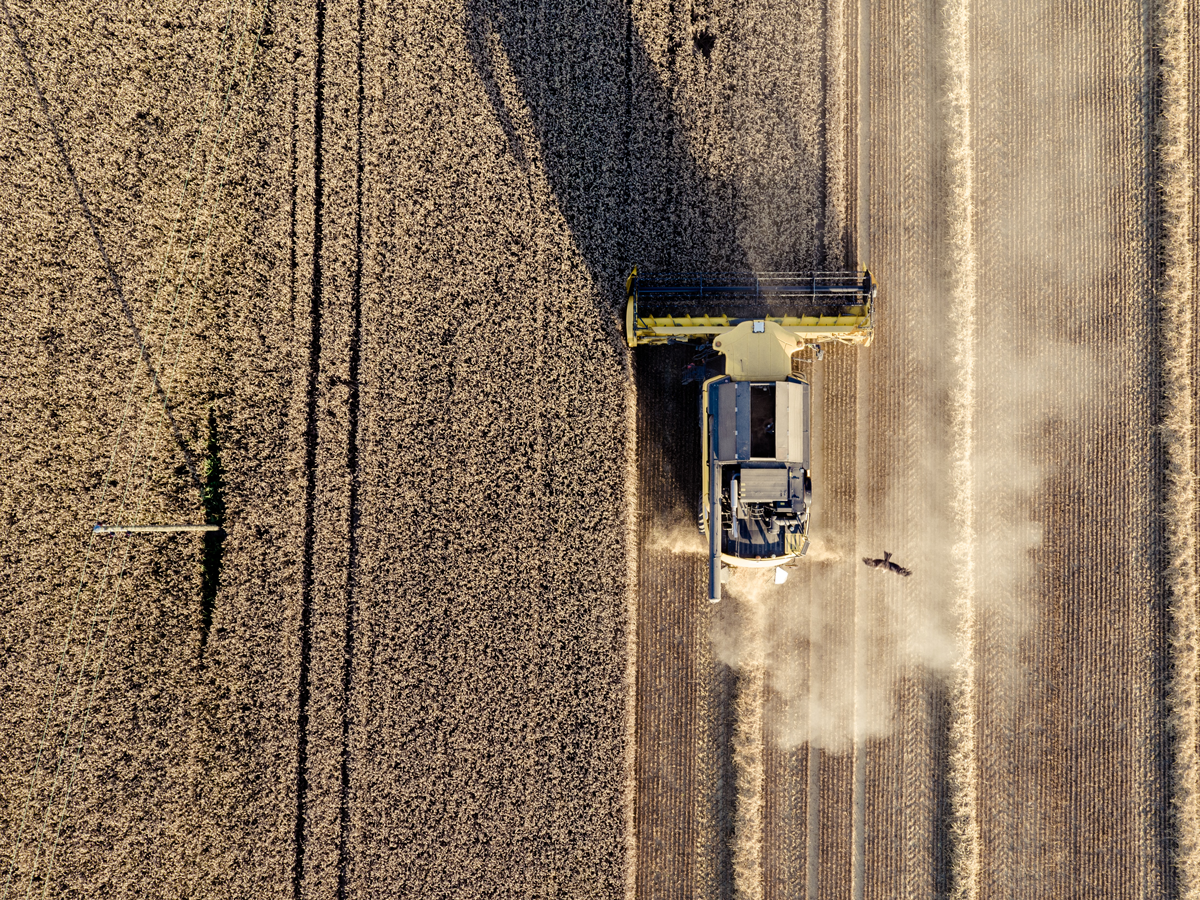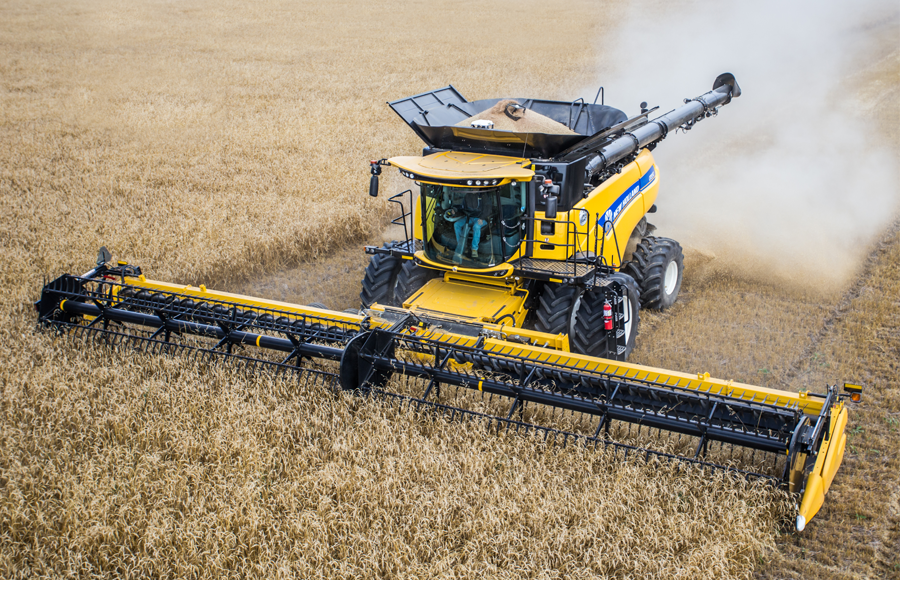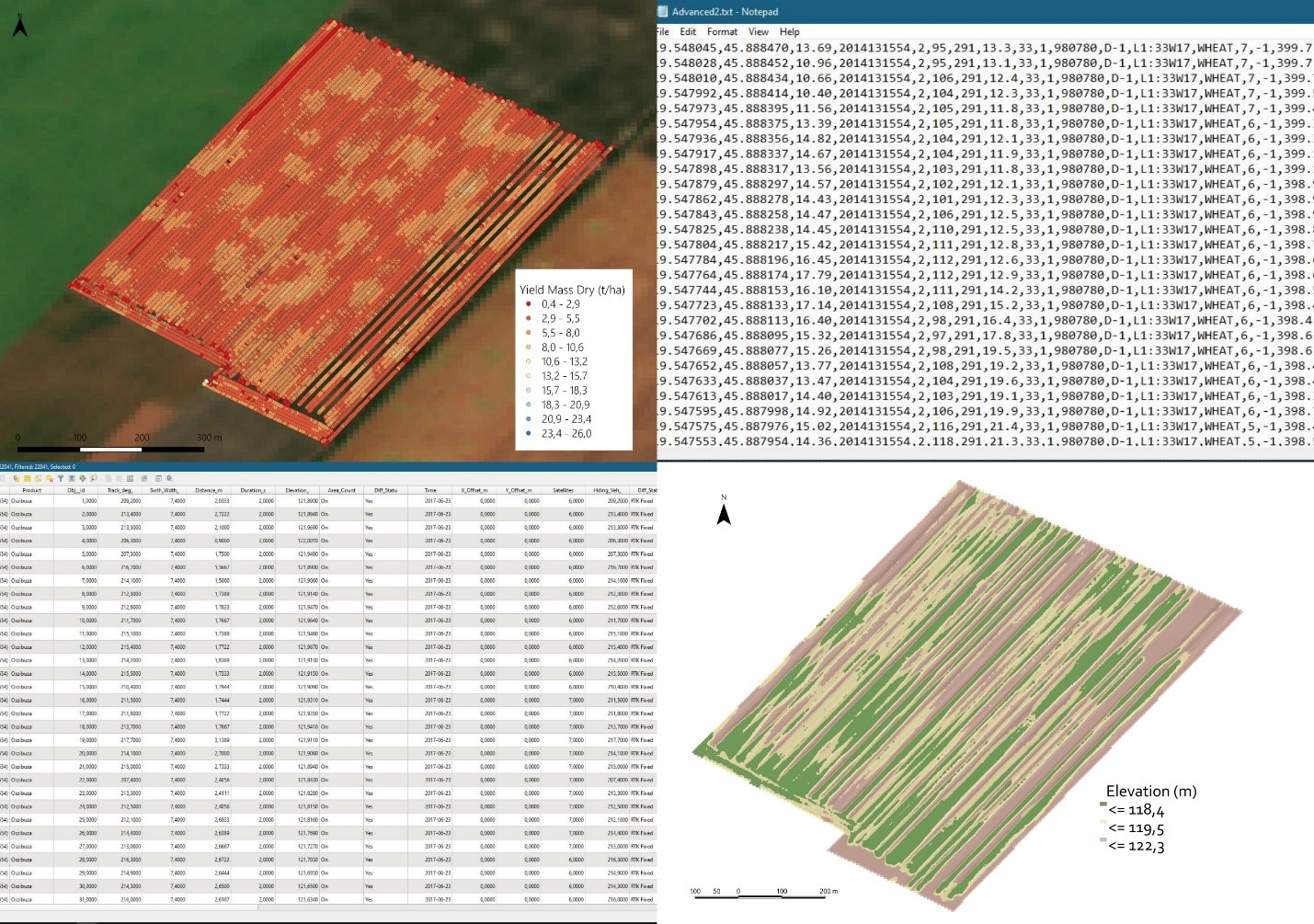
03 Aug The Benefits of Yield Monitoring and Mapping
Dragana Blagojević
Young Researcher, BioSense Institute
Since the early 1990s information technologies have become a crucial tool for precision farming. One of the most widespread techniques in agriculture is yield monitoring and mapping. It uses a combination of GPS technology and physical sensors to track crop yields, combine speed, grain moisture, elevation, and other relevant information in a given field. Nowadays, farmers started to see all the benefits that this kind of technology has, and which is worth to invest.

Figure 1. Combine harvester in the field
Yield monitoring allows farmers to gain valuable information about their fields and crops and at the same time develop site-specific crop management. One of the main benefits of the yield monitoring system is revealing the spatial and temporal variability in crop yields. The final products of monitoring are the yield maps which have a great impact on the decision-making process. In order to give qualitative information and represent the variation in the yield, the sensors on combine harvesters or tractors need to be perfectly calibrated with minimum systematic errors. Although, there are errors that cannot be avoided such as different swath width, inaccurate positional data, grain flow, and moisture delays, velocity errors, etc. These erroneous data must be cleaned. There is software made exactly with this purpose and can be a useful tool when dealing with an enormous amount of data as well as for understanding collected information. Once this data is cleaned, the ranges and limits for the certain crop can be implemented in other yield data.
There are four major components of yield monitoring and mapping: global positional system receiver (GPS), mass flow sensor, yield monitor, and moisture sensor. These technologies are installed on a combine harvester and are active during the harvest. The data is collected by sensors and stored in the device inside the combine. A mass flow sensor provides information that yield monitor uses to calculate how much grain is being taken into the combine continually. The moisture sensor takes the most valuable information for a farmer in various aspects. With this information, a farmer is able to secure the right market value for their crop. A GPS receiver is a remote sensor and it is used for measuring the position of combine, altitude, speed, etc. It records geo-referenced data that can be transformed into meaningful maps that the farmer can utilize. A yield monitor is located inside the cab of the combine where on the display, a farmer can see real-time information about his field and act quickly if there is any technical problem.
These devices give a user access to the complete dataset. The user can easily transfer the dataset to the personal computer and analyze it in many different software. These data can be exported in different formats depending on which software is used. The datasets include more than 20 columns that represent various characteristics of the field and soil at a certain sample point.

Figure 2. Raw yield monitor data, elevation map and information derived from sensors
The importance of these data is huge. Using information gained from these sources, farmers can determine various yield characteristics and improve yield management. They have a complete visualization of the yield condition which allows them to manage areas that need to be more irrigated and to find out the reasons why some areas of the field are not yielding any crop at. Moreover, they can develop nutrient strategies for the future and change the in-field management process according to yield potential. With all this information, their decision-making process becomes easier and more reliable. In the end, there is a great impact on the cost of production through accurate estimations. The yield monitor maps help farmers to explain and collect crop data with the aim to use it later to help secure loans and renters or land purchasers.
Yield monitoring and mapping is just one step in achieving sustainable agriculture. Rational use of resources contributes to a better life, better quality of food, and conscious behavior towards the environment. Today, companies engaged in this activity are investing more and more in these types of technologies because they are aware that sustainable agriculture is a future worth investing in.





















